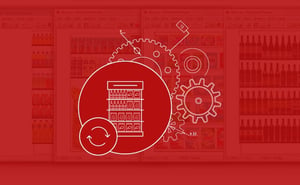A planogram, otherwise known as a visual representation of your store’s products positioning and space allocation on the shelf, is not just a shiny tool used by space planners. From ensuring sufficient inventory levels on your shelf to assisting in the process of mapping your store, it can help you maximise sales. That is why they are so critical to your store’s success.
In the past, planograms could only be built manually. Today, with the help of technology, you can build a planogram with just a click of a button.
What is planogram automation and how does it work?
As the name suggests, planogram automation is the automated process of arranging products on a gondola according to a set structure, which you can decide upon.
If you want to arrange products based on a category or sub-category, you have the choice to do that. If you’d rather arrange your shelf according to a brand, you can do that too.
The best part, or at least one of the best parts, is that instead of the above exercise taking five hours as it would if it was done manually, it now takes roughly two minutes (including edits and tweaks). Added to this is the fact that the process takes into account all of your merchandising rules applicable to the category and packs the products onto the shelf accordingly.
That means you have a shelf packed with the right amount of facings for each product, based on factual information about your products.
The only thing left to do is for a space planner to add a human touch to make sure that the planogram is 100% accurate.
Why should retailers use planogram automation?
As mentioned above, the use of planogram automation software reduces the time required to build a planogram down to a few minutes. But that is not the only reason why retailers should use planogram automation.
Planogram Automation is critical because it increases the output of planograms, making space planners more productive. It can also be used to significantly reduce the amount of time it will take to go from a list of products to a semi-functional gondola with products placed on it.
In retail, as is the case in any industry, time is money, so the sooner planograms are ready and implemented, the sooner you can save money, increase your profits, and prevent out of stocks.
When would planogram automation be useful to a retailer?
When it comes to planogram automation, it is most helpful when creating planograms from scratch. As for when planogram automation would be useful to a retailer, below are just three examples:
1. When rolling out a new store
This is the ideal time to use planogram automation as it will reduce preparation time before the opening of that new store.
It is highly unlikely that there will be an existing planogram for this new store or the products so automation would provide a quick method of going from zero to data-driven planogram.
2. When introducing a range of new products to the market
Similar to the rolling out of new store above, planogram automation will help any retailer looking to launch a range of new products. A bonus is if the retailer who is launching the new product is also new to planograms.
3. When creating a new cluster definition for your store
As a large retailer, if you find that you need to create an additional new cluster to provide a more local or culture-specific product assortment for your clients, you may realise that you don’t have a planogram with the correct number of drops for this new product assortment to fit onto.
This is where planogram automation could help you as it could use this new product assortment to automatically generate a new planogram that you could use for this new cluster.
How will planogram automation help space planners do their work
Planogram automation will not replace the work that a space planner does. Just because computer software can bring you to a certain point in the planogram generation process, it doesn’t mean the role of a space planner is now redundant.
Your planogram still needs a human touch.
However, their role will invariably change and this change is for the better.
A space planner will now have the opportunity to spend more time on setting up a product range or working on the assortment of a shelf. They will also be able to devote more time to analysing a planogram and fine-tuning it to perfection rather than creating it from scratch.
The result is a space planner that can up their productivity rate as they can help roll out more stores and planogram updates. At the same time, they will be able to showcase the value of their work far better, and have even more time to focus on doing more thorough retail analytics.
Conclusion
Creating a data-driven planogram has always been a time-consuming task. And anyone who works in retail knows that time is money. With planogram automation here and ready to use, it only makes sense to make the most of it.
Looking for advice or need a category management solution that can help your business? Visit our online store here for more information or book a custom exploratory consultation.


